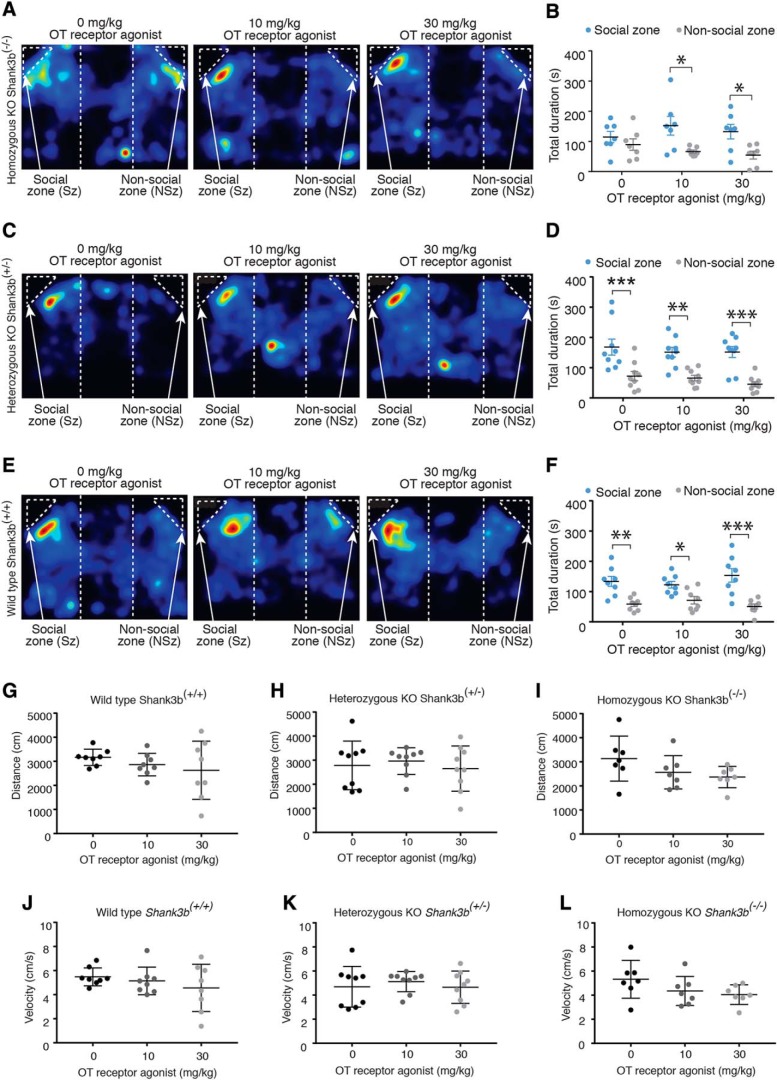Figure 9.
Oxytocin receptor agonist rescues social deficit in Shank3b KO mice. A, Representative activity heat maps from Shank3b−/− mice (homozygous KO) receiving injections of either vehicle, 10 mg/kg of an OT receptor agonist, or 30 mg/kg of an OT receptor agonist before social choice testing. B, Peripheral administration of an OT receptor agonist restored social deficits in Shank3b−/− mice (n = 7/group). C, Representative activity heat maps from Shank+/− mice (Heterozygous KO) receiving injections of either saline, 10 mg/kg of an OT receptor agonist, or 30 mg/kg of an OT receptor agonist before social choice testing. D, Peripheral administration of an OT receptor agonist did not alter social preferences in heterozygous KO mice (n = 9). E, Representative activity heat maps from Shank+/+ mice (WT) receiving injections of either saline, 10 mg/kg of an OT receptor agonist, or 30 mg/kg of an OT receptor agonist before social choice testing. F, Peripheral administration of an OT receptor agonist did not alter social preferences in WT (n = 8) mice. (G–I) During the social choice test, peripheral administration of oxytocin receptor agonist did not impact the total distance traveled in (G) wild-type (F(2,21) = 0.42, p = 0.66, n = 8), (H) heterozygous (F(2,24) = 0.30, p = 0.74, n = 9), or (I) homozygous KO mice (F(2,18) = 2.15, p = 0.15, n = 7). (J–L) There was also no effect on velocity during the social choice test in (J) wild-type (F(2,21) = 0.91, p = 0.45, n = 8), (K) heterozygous (F(2,24) = 0.33, p = 0.72, n = 9), or (L) homozygous KO mice (F(2,18) = 2.03, p = 0.16, n = 7). *p ≤ 0.05, **p ≤ 0.005, ***p ≤ 0.0005.

